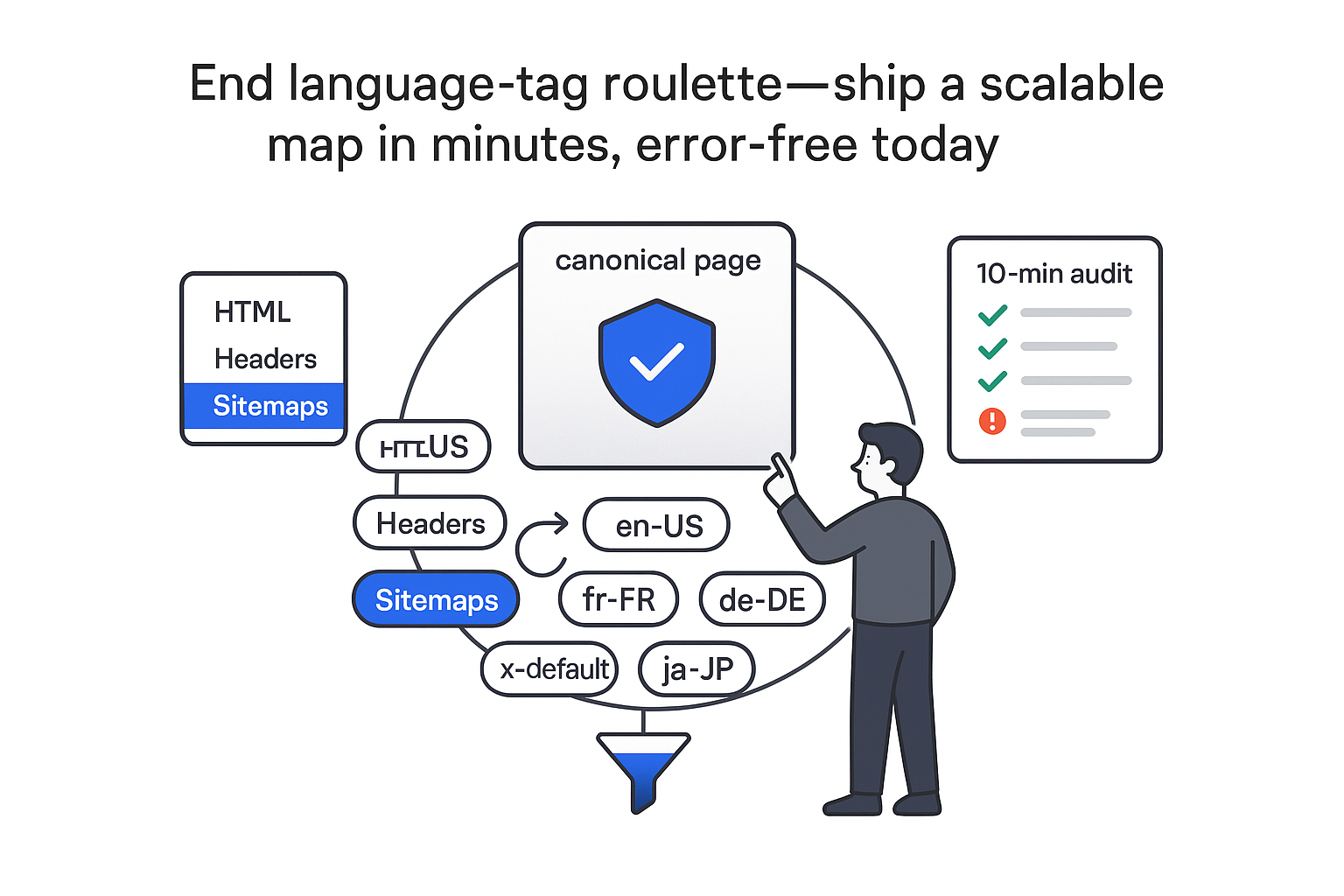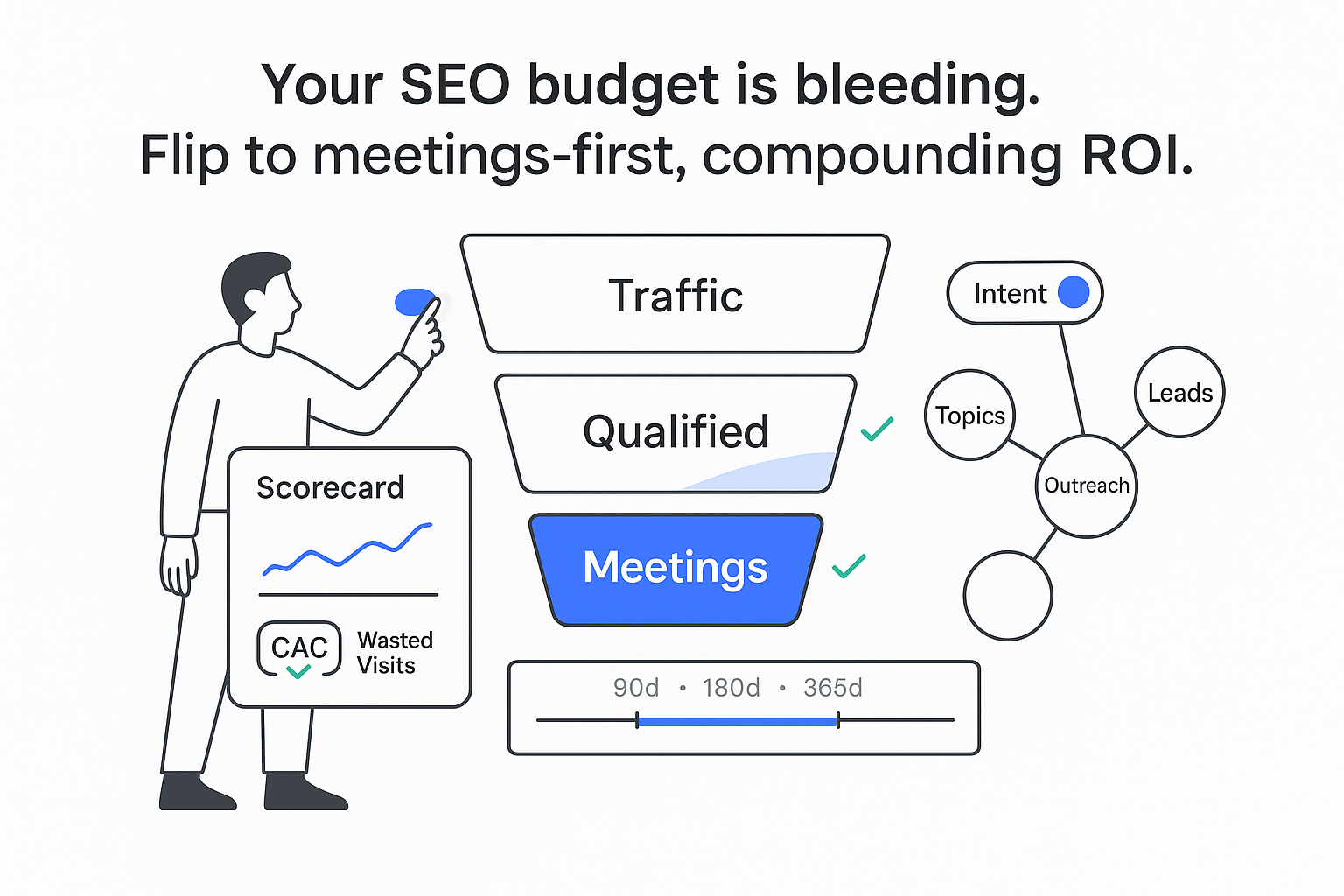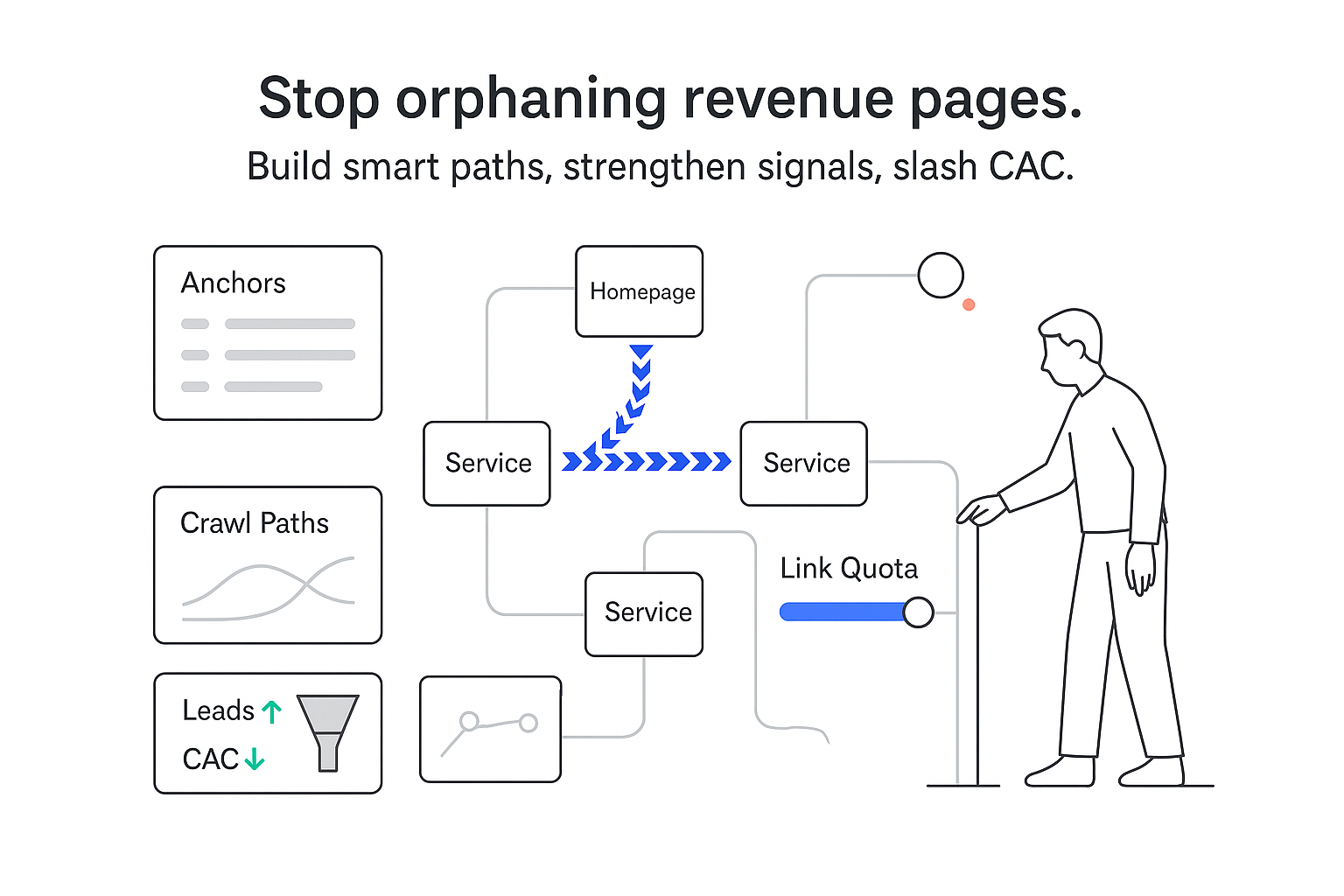B2B service leaders do not need more noise. I want meetings booked, pipeline created, and CAC that stays sane while I grow. That is where AI in account-based marketing shines. It turns messy signals into clear next moves, pairs strategy with speed, and gives my team the kind of focus I can measure week by week.
AI in account-based marketing: Quick wins for CEOs
If I am running a service company with longer sales cycles and high ACV (average contract value), I need outcomes, not hobby projects. AI in account-based marketing gives me a tight 90-day runway to prove impact. The trick is to move fast without guessing, keep owners and SLAs (service-level agreements) clear, and show the numbers in a simple dashboard a CFO will trust. If you want a fast way to operationalize this, Use this template.
- Days 0 to 30: Dynamic ICP refresh. I build a living ICP (ideal customer profile) weighted by revenue, margin, win rate, and retention. I pull firmographics, technographics, and product-fit signals from my CRM, data vendors, and past deals. AI flags patterns humans miss - common integrations, staffing triggers, or hiring bursts. The output is one target account list by tier (a TAL - target account list), not five versions that drift.
- Days 31 to 60: Intent-signal activation. I pipe in intent data, website activity, email clicks, ad engagement, and outreach history. I set threshold rules that turn interest into action. If a Tier 1 account spikes for three straight days on a core topic, an SDR sequence starts within hours, not next week. Ads and on-site content shift to match. For background on intent data and buyer intent, these guides help.
- Days 61 to 90: 1:1 personalization at scale. I use AI to produce persona-level emails, talking points, and landing page blocks that reflect account context, not just first names. Approval rules keep tone and claims on brand. SDRs edit the last 10 percent so it sounds human. Sales and marketing operate from the same view to avoid surprises.
A scenario to make this real: an IT services firm targeting 120 North American accounts refreshed its ICP and activated intent in Q1. Within 45 days, 20 target accounts moved from unknown to engaged, eight booked meetings, and four entered pipeline. CAC on those deals dropped 18 percent versus the prior quarter because the team stopped chasing cold leads and focused on live signals. Results vary by baseline, but this pattern is common in services categories.
ABM orchestration: Definition and value
ABM orchestration is the coordinated, signal-triggered execution of cross-channel plays across marketing, SDR, and sales. One set of rules captures intent and engagement. Plays launch when thresholds are met. Messaging and timing match the buyer’s stage. Everyone sees the same data. For a primer, see Account-Based Marketing (ABM) Orchestration.
That is very different from spray-and-pray marketing. Traditional campaigns push a theme to a broad audience and wait for downloads. Orchestration starts with a tight account list and a clear buying committee. It listens first, then acts. It can sound slower, yet it feels faster because waste gets cut.
Many teams now talk about ABX (account-based experience). I apply the same orchestration logic to the full customer lifecycle, so onboarding, upsell, and customer success touchpoints follow the same signal rules that drove the first meeting. New logo and expansion act like one system. For more on ABX in practice, see Revolutionizing the Potential of AI-Powered ABM/ABX Marketing.
How ABM orchestration works: From signals to plays
I keep AI in ABM practical with a simple five-step loop.
1) Data collection and signal detection
I pull firmographics, technographics, intent, website visits, and CRM activity into one place. Typical sources include Salesforce or HubSpot for deals, third-party interest from providers like Bombora or G2, website analytics for behavior, and enrichment from Clearbit or ZoomInfo. AI models flag patterns - say, rising topic interest plus a hiring spike for a key role. If you want a person-level view that monitors all these signals, this breakdown helps. Strong intent is your ignition point - more on that here: strong intent.
2) Trigger activation
I convert ICP traits and engagement thresholds into rules. Example: if a Tier 1 account with the target tech stack views pricing twice in a week and two buying-committee roles engage content, I launch the Tier 1 play. A marketing automation platform (MAP) handles messages, and orchestration rules fire the right channels. See Predictive account scoring and AI-driven orchestration concepts in AI-driven orchestration.
3) Cross-channel play execution
Once a play fires, channels move together. Ads shift to the account’s topic, SDRs receive a short brief with proof points, nurtures swap content blocks, and the website serves the relevant case study to known visitors. For coordinated outreach, see Multi-channel campaign coordination and AI DemandGen agent examples.
4) Real-time feedback loop
As contacts open emails, watch demos, or chat with a bot, those actions feed back into the score. If engagement cools, the cadence slows. If a champion appears, the sequence escalates. Alerts keep owners in sync so nothing sits. Tracking engagement metrics and running Campaign performance analysis keep the loop tight.
5) Optimization and iteration
Tiering, plays, and budgets evolve with the data. If Tier 2 accounts in a certain industry show lower cost per meeting, I shift spend. If a message falls flat, I swap it. Version control across ABM and AI-assistant tools supports testing, rollbacks, and clean audit trails. Explore fine-tuning and optimization and automating complex tasks.
Benefits of AI for ABM: ROI, speed, team unity
The gains show up fast when I connect the dots, and they tie to numbers that matter.
- Smarter account targeting. AI analyzes thousands of traits to find look-alikes based on actual wins. Net effect: higher opportunity rate per 100 accounts and less spend on the wrong names. ITSMA and Forrester have reported ABM outperforms traditional tactics on ROI; results vary by segment. For an overview of choosing an ABM solution, this guide helps.
- Personalization at scale. Persona-aware emails, social copy, and page modules update based on live behavior. In controlled tests, many teams report 2-3x higher reply rates versus generic outreach; baseline quality and list fit drive the delta. See examples of hyper-personalization at scale.
- Real-time prioritization. Hot accounts rise to the top of daily queues. SDRs focus where momentum exists. Days to first meeting often drop by several days in services categories. Learn more about lead scoring.
- Sales and marketing working as one. Shared signals, one playbook, one dashboard. Fewer handoff misses, cleaner attribution, and clearer accountability. For GTM alignment in the AI era, see Adapting your GTM to win the AI-driven buyer.
- Efficiency and shorter cycles. AI reduces the heavy lift in list building, research, and copy drafts. Reps spend more time in conversations. I frequently see time to opportunity fall 15-30 percent within a quarter when execution disciplines stay tight. This perspective on GTM change is useful: The hard truth about what AI will do to GTM.
AI ABM use cases: 6 plays to run now
I keep it practical with six high-impact plays that do not require rebuilding a stack.
1) Dynamic ICP discovery
Trigger: Quarterly review or when win rates shift.
What happens: I pull deal history, retention, and gross margin; weight accounts by lifetime value, not just quick closes. AI surfaces traits that truly matter (for example, a critical integration or compliance regime). The TAL becomes a living asset. Tie in external New Hire Signal to spot hiring shifts.
2) Predictive account prioritization
Trigger: Weekly intent and engagement refresh.
What happens: I combine first-, second-, and third-party signals to score warming accounts. I distribute ranked lists by territory so reps work the top 20, not a random 200. Explore Predictive account scoring and person-level tracking that monitors all these signals.
3) Hyper-personalized outbound sequences
Trigger: Score crosses an outreach threshold or a key persona engages.
What happens: AI drafts emails using account context, recent news, and product fit. Reps add one line of human context. Approvals and tone rules keep it safe. Sequences adapt if a CFO replies versus a technical lead. See AI SDR agents and best practices for AI SDR agents.
4) Signal-based LinkedIn and display advertising
Trigger: Topic interest spikes or buying-committee reach is thin.
What happens: Audiences update based on intent and engagement. Creative swaps to match the exact topic buyers are reading about. Spend tilts toward accounts showing heat. See examples of hyper-targeted campaigns and tools for hyper-targeted advertising.
5) AI-powered chat engagement for target accounts
Trigger: Known account visits a key page or repeats a high-intent action.
What happens: Bots greet named accounts with context. If the visitor is a VP from a Tier 1 company, I route to a rep; if it is a researcher, I guide to a relevant case study and capture the right role. See AI chatbots.
6) Intelligent routing and real-time SDR alerts
Trigger: Buying signal from email, chat, or site behavior.
What happens: Rules route by territory, industry, or product interest. Alerts ping reps with a brief and a one-click action. Lead leakage drops, and response times shrink from hours to minutes. For end-to-end reliability, connect marketing automation, CRM systems, and data integration.
Optional add-on: Content by buying stage. I auto-swap case studies, pricing explainers, and ROI calculators as contacts move from early education to vendor comparison. For segmentation, see data-driven ABM campaigns.
AI-powered ABM tools: Platforms and integrations
A short list of well-known platform types and where they fit - examples, not endorsements.
- Predictive and intent orchestration. Platforms that score accounts, unify signals, and trigger plays are helpful for longer cycles and complex motions. See Demandbase Orchestration and the broader Demandbase One suite.
- Account advertising and personalization. Systems that manage account-based ads and on-site experiences support cross-channel consistency.
- CRM and MAP. CRM anchors truth; a MAP executes messaging and nurtures without heavy lift.
- Data and enrichment. Firmographic and technographic enrichment improves match rates, reach, and routing.
- Collaboration and alerts. Slack or similar tools keep owners aligned in real time.
- CDP (customer data platform). A CDP such as Segment or similar centralizes events and makes orchestration reliable.
No platform stands alone. Critical integrations include CRM for truth, MAP for emails, enrichment and intent for signals, ad networks for reach, a CDP for event flows, Slack-style alerts, and API access so the stack talks to itself. For a practical stack view, see sales and marketing tech stack, a review of 6sense, and a broader landscape of ABM solutions. If you want to try an AI-first approach, start with marketing automation and data integration. For integrations, check Integrations.
Challenges of AI in ABM: Risks and how to avoid them
A few common snags can slow teams down. Each has a clear fix.
- Data readiness and quality. Messy CRMs and thin contact maps lead to shaky scores. I fix this with ETL pipelines, dedupe rules, field governance, and enrichment. One owner is accountable for data hygiene, with a monthly audit.
- Complexity and integration. Too many loosely stitched tools create gaps. I solve this with a simple blueprint and phased rollout. Start with ICP, signals, and one or two plays; expand once SLAs and results are stable. Helpful context: sales and marketing tech stack.
- Over-personalization and uncanny messaging. Creepy emails burn trust. I set guardrails, lock tone and claims, keep references public, and use approvals for Tier 1 outreach. Reps do final edits so it reads like a human.
- Skills and confidence gaps. Teams may not trust AI output at first. I build internal playbooks of wins, run short trainings, and create a small center of excellence to answer questions and test before scaling.
- Budget and resource constraints. Costs add up if every feature rolls out at once. I pilot a narrow scope and gate expansion with hard ROI checkpoints (for example, cost per meeting or days to opportunity versus the prior quarter). For methods and proof points, see How to Leverage AI in Marketing: Strategies and Best Practices.
- Compliance and brand safety. Privacy rules and brand risk require oversight. I use approval workflows, role permissions, and version control, and I keep an audit trail for every automated message and rule change to address GDPR/CCPA considerations.
Ownership and operating cadence that prevent drift
Ownership matters. I assign one owner for ICP, one for signals and triggers, and one for play execution. I publish SLAs - for example, SDR follow-up within two hours on Tier 1 triggers - and a weekly dashboard that shows lift by account tier. When the rules are public, the work gets done. I also hold a 15-minute weekly sync to review top accounts and a monthly review to retire underperforming plays. For an execution model that turns strategy into pipeline, see Account-based GTM pods that turn strategy into pipeline.
Measure ABM orchestration: 90-day plan and KPIs
I skip vanity scoreboards and tie AI ABM to revenue outcomes through a clear measurement framework.
- Coverage. Account and contact completeness across tiers and buying committees. Track account list coverage, persona coverage, and percent enriched.
- Reach. Ad and site engagement from target accounts. Look at account-level impressions, visits, and matched audience growth.
- Engagement. Time on site, named asset views, content depth by persona, reply and meeting rates, and chat-to-meeting conversion.
- Pipeline. Opportunities created, pipeline value, stage progression, win rate, cycle length, and sourced versus influenced clarity.
- Revenue. ACV, ARR mix, LTV:CAC, and retention signals by cohort.
My 90-day motion mirrors the execution plan:
- Days 0 to 30. Finalize ICP and tiers. Wire intent and site signals into scoring. Stand up dashboards in a BI tool or CRM. Publish SLAs for SDR follow-up and play activation.
- Days 31 to 60. Pilot two or three plays such as predictive prioritization, personalized outbound, and signal-based ads. Hold weekly readouts. Compare meetings per 100 accounts, response time, and cost per meeting to last quarter.
- Days 61 to 90. Scale what worked. Pause what did not. Tighten SLAs, document the playbook, and lock next-quarter targets by tier. Host a simple QBR so finance, sales, and marketing share the same picture. For ROI alignment, see How to Measure ROI of Your Account Based Marketing Strategy and metric frameworks in How to ABM Like a Boss (Part 6): Measure with Account-Based Marketing Metrics .
Wrapping up
AI and ABM are not magic. They amplify a clear strategy and expose gaps quickly. I expect some friction as new rules replace old habits. The fix is simple: keep the plan clear, keep owners visible, and keep the scoreboard honest. If you are shifting from lead-centric metrics, this is a useful read: Why the MQL model is failing B2B marketing and what to use instead. If you want to put this into practice today, Use this template.
The result, when done well, is steady growth with less waste. Fewer cold calls, more qualified meetings. Fewer one-off campaigns, more signal-based plays. And a team that spends its energy where it counts.







.svg)